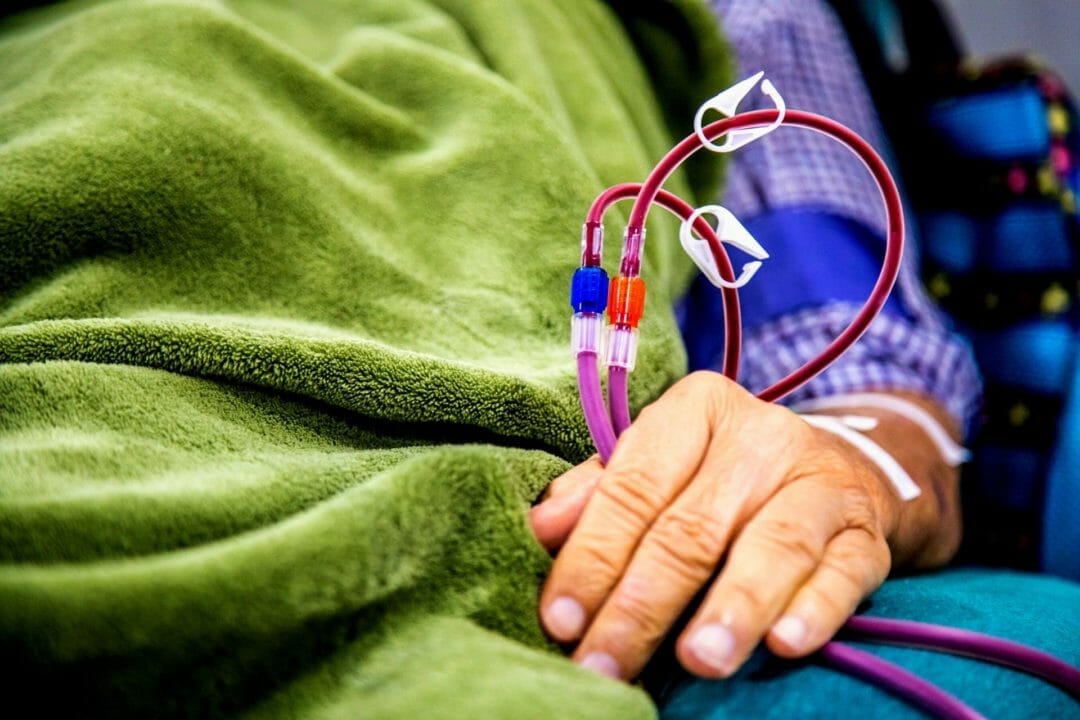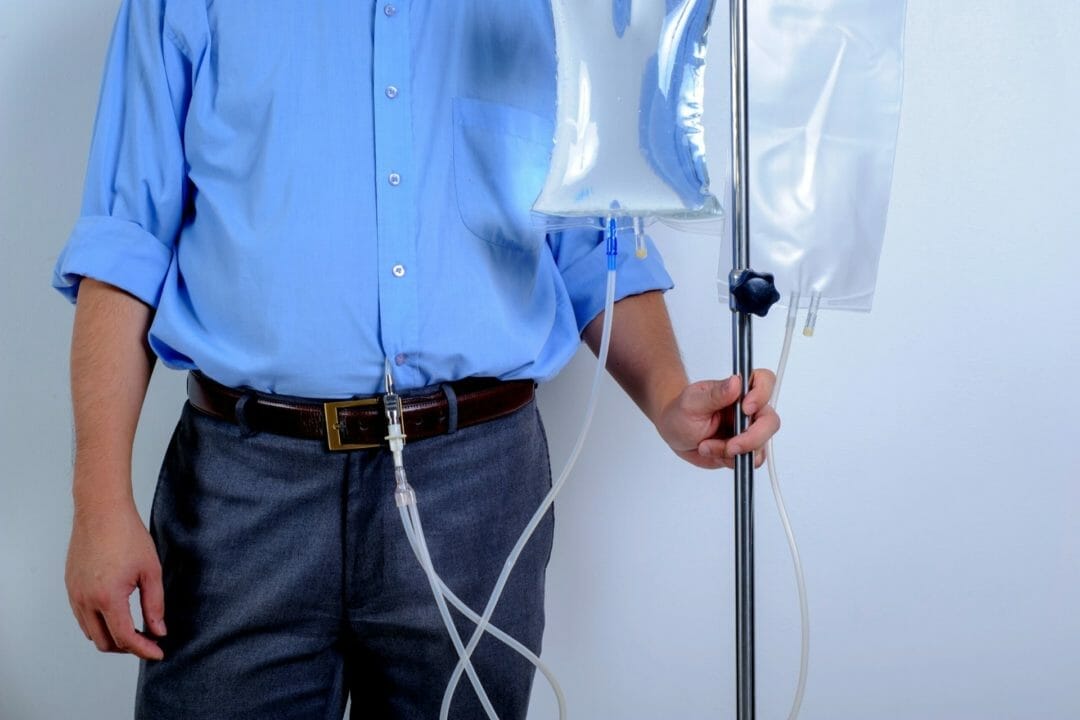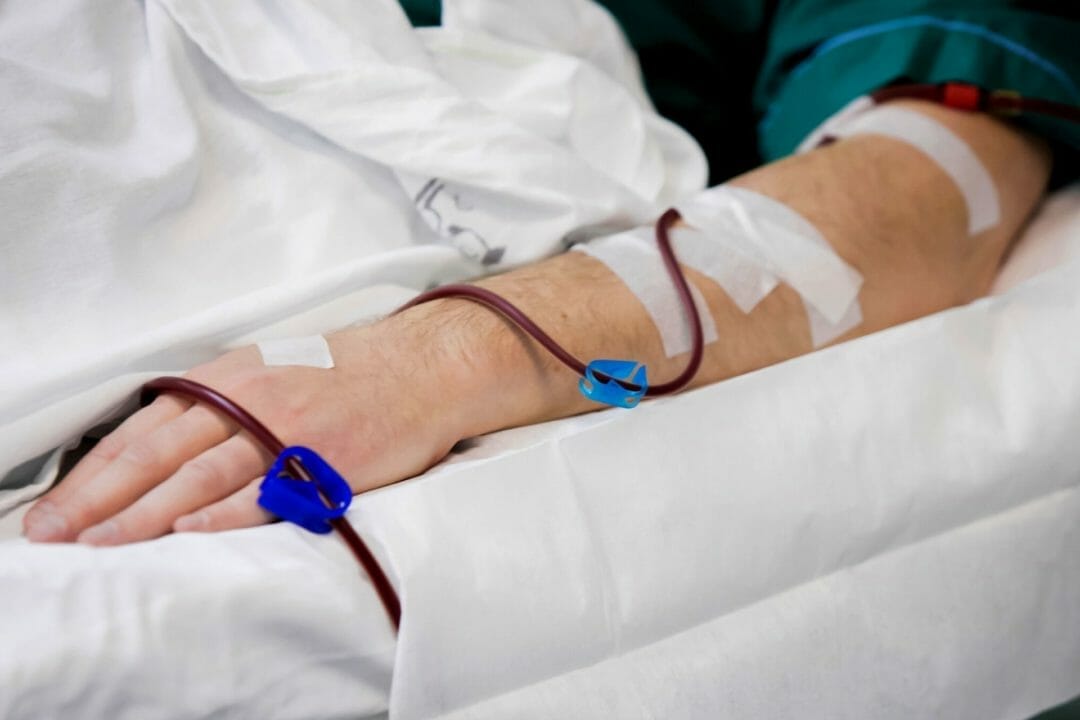Healthy kidneys remove the extra fluid and waste from the blood through urine. However, when the kidneys have lost 85-90% of their ability to function, this is the time a patient is required to undergo dialysis. Dialysis replaces some of the kidney’s functions as it excretes the waste products and excess fluid from the blood. Kidney patients can choose from the three types of dialysis –in-center hemodialysis, home hemodialysis, and peritoneal dialysis.

In this article, we will discuss at-home dialysis treatment and how a patient's family can act as an informal caregiver, making a big difference in a CKD patient's recovery.
At-Home Dialysis vs. In-center Dialysis
When you have to undergo dialysis, you are given options to have either peritoneal dialysis or hemodialysis. Peritoneal dialysis (PD) can be done at home, while hemodialysis (HD) can be done at home, in-dialysis centers, or clinics.
It is more common for patients to choose in-center dialysis because of convenience and lack of confidence to have dialysis at home. At-home dialysis is vastly underutilized in the United States. A study conducted in 2018 showed that approximately 86% of dialysis patients choose in-center while less than 1% chose at-home dialysis, and by 2020, 11% chose peritoneal dialysis.

Emerging studies show that at-home dialysis treatment contributes better mortality rate and better quality of life than in-center dialysis treatment. It is now being promoted to dialysis patients but with a few requirements such as space, and hands-on training both to the patient and a family member or a designated caregiver.
Here is a quick comparison between in-center dialysis vs. at-home dialysis treatment options:
1. In-Center Hemodialysis
A surgeon will need to create a hole in the vascular site. A machine will then act as an artificial kidney where a tube will be inserted into the vascular site in order to filter the blood.

Special Conditions
Scheduling and time are needed for dialysis treatments especially since patients would be required to travel to dialysis centers.
Location
Dialysis Clinic or Center
Frequency and Duration
3 to 5 times a week; 5-8 hours.
Pros
You can connect with other dialysis patients. Troubleshooting and technical difficulties are easier to resolve. Centers and clinics are accessible in every state.
Cons
Patients will need to visit the dialysis center or clinic frequently. Patients sometimes feel a lack of privacy during treatments
2. At-Home Hemodialysis
Similar to in-center hemodialysis treatment, a surgeon will need to create a hole in the vascular site. A machine will then act as an artificial kidney where a tube will be inserted into the vascular site in order to filter the blood.
Special Conditions
Similar to in-center hemodialysis treatment, a surgeon will need to create a hole in the vascular site. A machine will then act as an artificial kidney where a tube will be inserted into the vascular site in order to filter the blood.

The storage area for the machine should be about 2 meters wide against a wall. The area should be dry, undercover, and off the ground. Accessibility to an electrical outlet, water, handwashing area, and waste disposal is needed.
It is also recommended to have an accessibility to drain machines to septic tanks. This can be done with a trained family member. Pets should be kept away from the dialysis treatment area, especially during treatments.
Location
Dialysis Clinic or Center
Frequency and Duration
5 to 6 times a week. Duration: 5-6 hours
Pros
Can be done at home while relaxing or doing home hobbies. Work-friendly. Will be able to spend more time with your loved ones. Fewer diet restrictions but still with a kidney-friendly diet prescription.
Cons
There is a risk for infection if not done in a clean area or if the insertion area is not clean. There may be technical difficulties at home, and this is why training is important both for the patient and family member or a care partner.
3. Continuous Ambulatory Peritoneal Dialysis (CAPD)
The simplest form of dialysis wherein a catheter or a special tube is placed permanently on your tummy through surgery. And a dialysate (a fluid) goes inside the body through the tube, and then exits the body, acting as the filter in replacement of the kidney.

Special Conditions
Two bags of dialysate is needed on an average The storage area for the bags should be about 2 meters wide against a wall. The area should be dry, undercover, and off the ground. Accessibility to the handwashing area and waste disposal area is needed. Pets should be kept away from the dialysis treatment area, especially during treatments.
Location
Home or any area where it is safe and clean.
Frequency and Duration
Done 3 to 5 times in a 24-hour period. Duration: 30-45 minutes
[Regular Text Box] Lorem ipsum dolor sit amet, consectetur adipiscing elit, sed do eiusmod tempor incididunt ut labore et dolore magna aliqua. Ut enim ad minim veniam, quis nostrud exercitation ullamco laboris nisi ut aliquip ex ea commodo consequat. Duis aute irure dolor in reprehenderit in voluptate velit esse cillum dolore eu fugiat nulla pariatur.
Pros
Convenient and can be done while watching TV, doing work, and resting at home. Fewer diet restrictions but still with a kidney-friendly diet prescription. Travel-friendly.
Cons
There is a risk for infection if not done in a clean area or if the insertion area is not clean. There is a chance of weight gain because of dialysate fluid.
4. Automated Peritoneal Dialysis (APD)
Also known as “machine” or “cycler” dialysis where it allows performing dialysis overnight during sleep. An APD machine is connected to the peritoneal dialysis catheter at night and is disconnected in the morning.

Special Conditions
Takes about half an hour to an hour in the evening to prepare. A nurse or trained family member/ care partner is needed for monitoring. Storage area for the APD machine, about 2 meters wide against a wall. The area should be dry, undercover, and off the ground.
Accessibility to an electrical outlet, handwashing area and waste disposal area is needed. Pets should be kept away from the dialysis treatment area, especially during treatments.
Location
Home can be in the r bedroom or vacant room in the house
Frequency and Duration
Every day during nighttime, or at times can be at daytime if not able to conduct at night; Duration: 8 hours.
Pros
Daytime is usually dialysis-free Can be done during sleep Research suggests that overnight APD machine can help reduce snoring and difficulty of breathing during nighttime (Sleep Apnea) Fewer diet restrictions but still with a kidney-friendly diet prescription.
Cons
There is a risk for infection if not done in a clean area or if the insertion area is not clean. There may be technical difficulties at home, and this is why training is important both for the patient and family member or a care partner.
Is At-Home Dialysis Safe?

At-home dialysis is generally safe. Peritoneal Dialysis and hemodialysis can be done at home as long you can safely manage and handle troubleshooting on your own or with your family or care partner. However, it will take time to learn. It takes about an average of a week of training in a clinic to learn about peritoneal dialysis and six to eight weeks of three to four sessions to learn about home hemodialysis.
Another worry for home hemodialysis patients is when they have to learn how to insert a needle, either through their arteriovenous graft or arteriovenous fistula. Nevertheless, once you gain confidence in doing it, you may prefer to do it yourself rather than having the nurse do it.
Family members as Informal Caregivers
Living with kidney disease, especially when going through dialysis, isn’t something that you should do alone. The dynamics of the family change when one goes through a chronic disease such as CKD. However, it doesn’t have to be a bad experience.
While your family can be emotionally affected by your condition, they can also act as an informal caregiver during treatments. Doing so can lessen expenses and bring you closer to each other rather than hiring a personal nurse to help in at-home dialysis treatments.

What can your family do during at-home treatments?
Healthcare professionals usually recommend at-home dialysis patients to have a "care partner" who is willing to help them during treatments. The "care partner" can be a family member, and in testimonials of some at-home dialysis patients, it would sometimes be their spouse and even children.
To fill in the role of a caregiver, a family member or loved one should undergo training.
Here are a few of the basic things family members would need to learn.
At-Home Hemodialysis & Automated Peritoneal Dialysis (APD) | Continuous Ambulatory Peritoneal Dialysis (CAPD) |
|---|---|
Learning how to set up the treatment room | Learning how to set up a clean room to do exchanges |
Learning on how to take care of the access site and how to put in the needles | Learning proper hand sanitation before replacing the dialysate |
Learning how to figure out how much fluid to remove | Learning how to take care of the catheter and exit site |
Learning how to run and care for the dialysis machine | Learning how to do an exchange of dialysate |
Learning how to store and order the needed supplies for treatment | Learning what kind of fluid to use and when to do an exchange |
Filling up and monitoring treatment logs | Learning how to store and order the needed supplies for treatment |
Learning how to take the patient’s blood pressure | Learning how to take the patient’s blood pressure |
Learning the patient’s diet and fluid limits | Learning the patient’s diet and fluid limits |
Knowing how to recognize and report any problems encountered during treatments. | Knowing how to recognize and report any problems encountered during treatments. |
Will your loved ones be affected by the treatment?
Involving the family members and giving emotional support can help ease the anxiety, stress, or worries of a dialysis patient. What makes at-home dialysis treatment unique and recommendable is that it allows you to bond with family members even during dialysis. Understandably, children will be worried once they see your condition, but being open to them about it will also put their minds at peace.

The Bottom line
At-home dialysis treatments become more bearable once you get your family on board with the process. A family member can (potentially) even become a “care partner.”
Having At-home dialysis treatments can offer a better quality of life and also promote bonding with your family members. But keep in mind that proper training and guidance from healthcare professionals are vital to make dialysis treatments possible in the comfort of your home.
Home Hemodialysis; National Kidney Foundation - https://www.kidney.org/atoz/content/homehemo
Peritoneal Dialysis; Home Dialysis Central - https://homedialysis.org/home-dialysis-basics/peritoneal-dialysis
What is Peritoneal Dialysis; National Kidney Foundation - https://www.kidney.org/atoz/content/peritoneal
Standard Home Dialysis; Home Dialysis Central - https://homedialysis.org/home-dialysis-basics/standard-home-hemodialysis
Modality Comparison of Dialysis Treatments; Home Dialysis Central - https://homedialysis.org/documents/ModalityComparison.pdf
Daily Home Dialysis; Home Dialysis Central - https://homedialysis.org/home-dialysis-basics/daily-home-hemodialysis
An Introduction to Home Dialysis; Kidney Health Australia Renal Resource Center - https://kidney.org.au/uploads/resources/an-introduction-to-home-dialysis-book-kidney-health-australia.pdf
Survival Comparisons of Home Dialysis Versus In-Center Hemodialysis: A Narrative Review; Vinson, A., Perl, J., & Tennankore, K. - https://www.ncbi.nlm.nih.gov/pmc/articles/PMC6628511/
Comparison of Mortality with Home Hemodialysis and Center Hemodialysis: A National Study; Woods, J., Port, F. et. al - https://www.kidney-international.org/article/S0085-2538(15)59500-8/pdf

